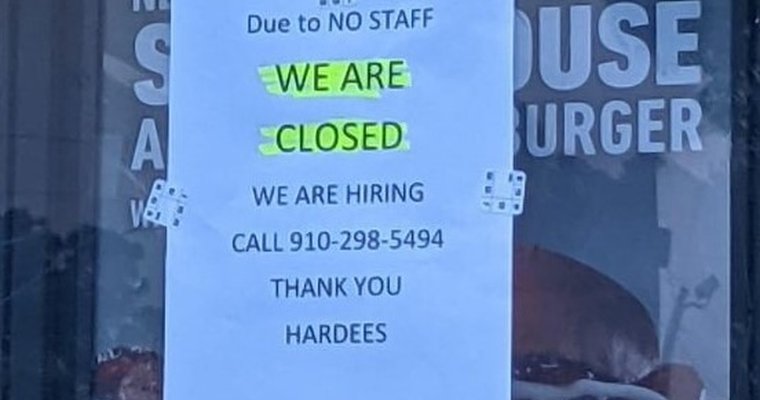1 - Are over 50s leaving the workforce?
2 - What do women want from the workplace?
3 - How are Millennials and Generation Z changing the job market?
One very common theme across many of our clients is the challenge they face in finding new staff. Regardless of whether they are in hospitality, care, retail or office-based occupations, all businesses seem to face a struggle.
So where have the workers gone? Surely there hasn’t been such a surge in economic growth that so many new businesses have been established that are absorbing all the workforce? Certainly, the ONS data on the economy doesn’t support that theory.
But instead of looking at one single reason, I think it may be valuable to look at the different profiles of the workforce as this tells us something quite different.

Are over 50s leaving the workforce?
According to the ONS data published last month:
"There has been an increase in the movement of over-50s from work to inactivity over the course of the pandemic. There are also a range of different motivations for stopping work, and although retirement is a key driver, issues around health, caring, change in lifestyle are all important factors too, often overlapping and inter-related. Whilst many aren’t interested in returning to work, those who are would be looking for greater flexibility of hours, the ability to work from home and to be able to fit work around responsibilities such as caring, in order to return to work."
In other words, people in the over 50 age group have taken stock of their work situation and in some cases are now less interested in furthering their career growth and more interested in achieving a better life balance. And that means flexible working, flexible hours and possibly a culture shift from the employer to positively embrace this choice rather than begrudgingly accept.

What do women want from the workplace?
It seems that there is growing evidence that women are leaving the workplace in growing numbers. A recent report from McKinsey highlighted a significant problem:
“The pandemic continues to take a toll on employees, and especially women. Women are even more burned out now than they were a year ago, and burnout is escalating much faster among women than among men. One in three women says that they have considered downshifting their career or leaving the workforce this year, compared with one in four who said this a few months into the pandemic…”
So what we are seeing is that many women in professional or managerial roles are re-evaluating their options and burnout is a key reason for that. With the pandemic having opened people’s eyes to the relative freedom of self-management of time and location – providing many with the freedom to create their own balancing act of work, home, care etc then there is natural resistance to wanting to let go of these freedoms and to tie themselves back into the control of the employer.
.jpg?width=1200&name=Blog%20Pics%20(1).jpg)
If you are struggling to attract people of this nature, then you really need to think carefully as an employer about providing that balance – work/life balance was often talked about as a hedonistic concept that didn’t really have a place in the modern workplace.
Oh, how that has changed! That genie is now out of the bottle and there is no returning it. Unless you embrace those freedoms and allow people to flourish under the new world conditions, then you may be facing a long struggle to retain staff, let alone hire new talent.
What impact are Millennials and Gen Z having on the job market?
The latest Randstad Workmonitor research found a significant number of Gen-Z and Millennials say they prioritize happiness over a larger salary. We've written extensively on how to how to use your culture to reach Gen Z here.
The survey, conducted earlier this year with 35,000 working adults in 34 markets worldwide, shows that workers 18 to 24 are the most insistent that work should not interfere with their pursuit of happiness. A majority (56%) say they would quit a job that prevented them from being happy.
Whilst it is interesting to read through all 25 (and I am sure we will all dismiss some of the wish list as being the typical dreamings of a young workforce) there can be no denying there are some underlying trends that cannot be ignored. I will pick just 5 items from that list:
Workplace expectations:
- Positive workplace culture - flexibility, social awareness, equality and ethics.
- Workplace flexibility
- Good work-life balance
- Opportunities to work in teams
- Coaching and mentoring opportunities
It is worth noting that whilst the younger workforce also seek flexibility, they differ from the groups above in the sense that they also crave a sociable environment and one where they can learn. In that sense, a blended workplace where there are some freedoms on office attendance, but with a focus on collaborative, project-based work can attract some great talent.
-2.jpg?width=4608&name=zyanya-bmo-kJTQrwWkQ2k-unsplash%20(1)-2.jpg)
None of us really want to attend an office where you simply go into a routine, with the same commute, same desk, same faces, same issues each day. How much more attractive would a job be that allows you to work with different people? To be part of a team that solves problems that you experience every day instead of just moaning about them? That encourages you to learn and contribute rather than just be a face/number?
In summary
1 - Many over 50s left their jobs during the pandemic and haven't returned.
2 - Those who would return are looking for flexible working hours.
3 - Women are disproportionately impacted by burnout and are leaving their places of work.
4 - 18-24 year olds are insistent that work should not interfere with the pursuit of happiness.
5 - Generation Z look for a sociable workforce where they can grow and learn.
6 - Flexible working is now key across all demographics.